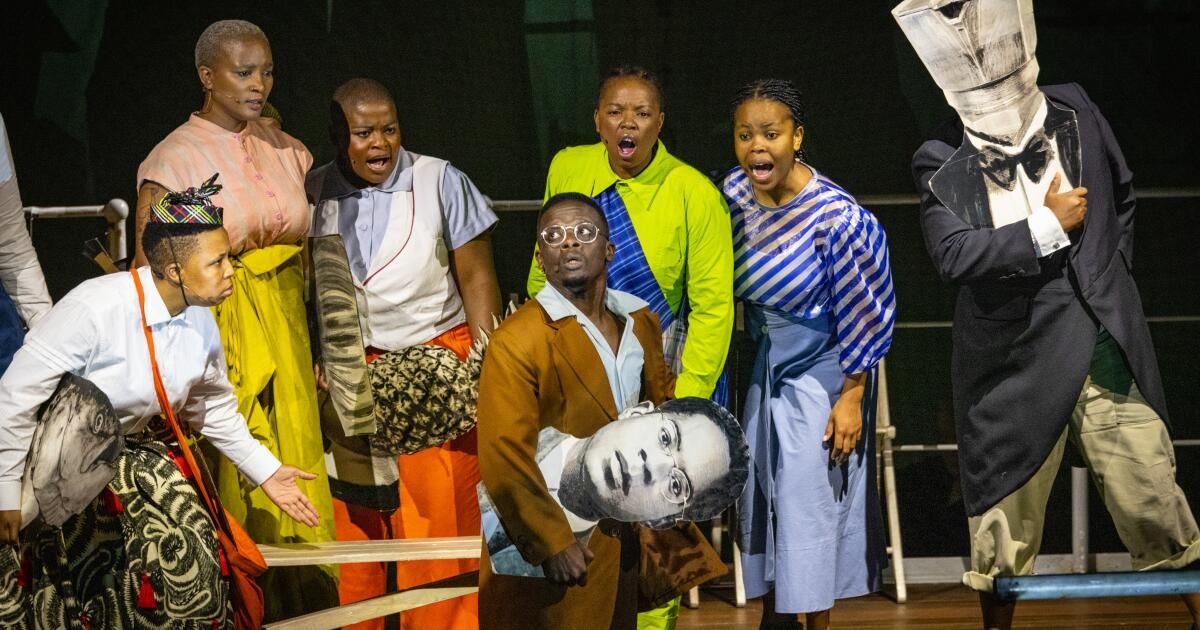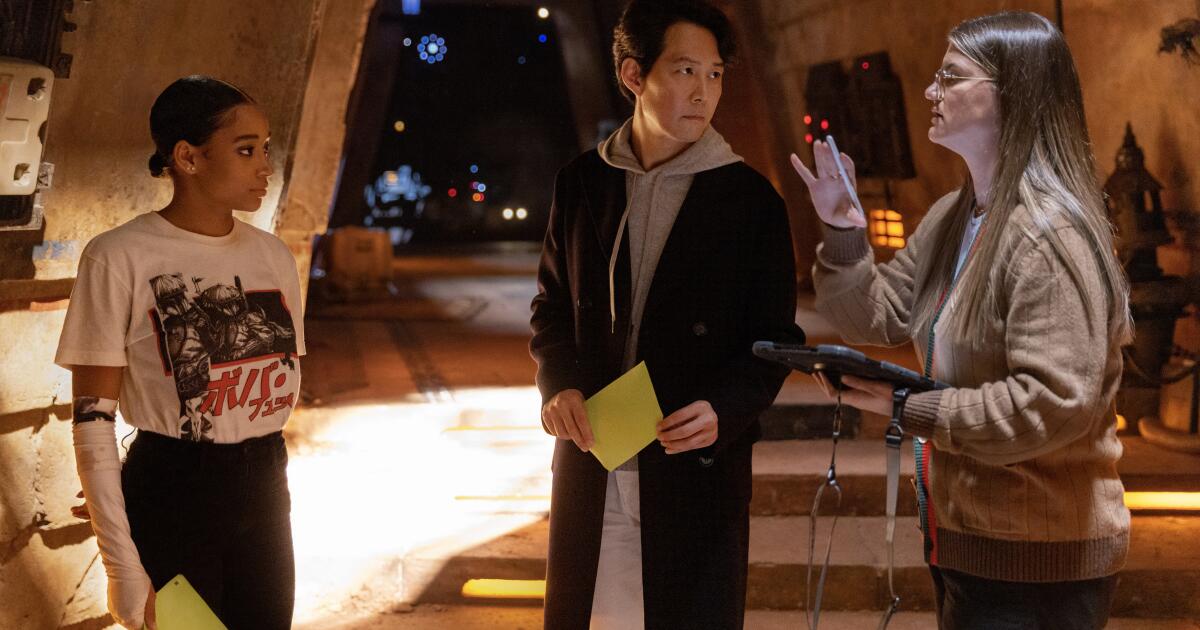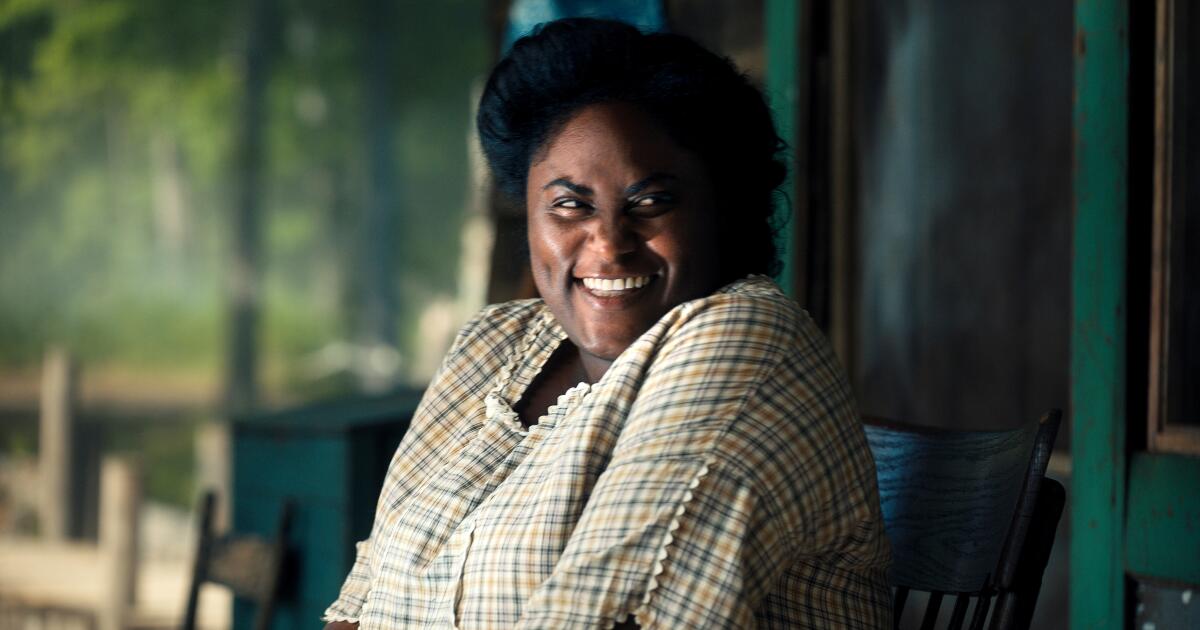“The great yes, the great no” is a great title. And William Kentridge's last chamber opera, which is having its premiere in the United States at the Wallis in Beverly Hills, is up to that title as one of the most surprising works of the South African artist. Concept, address, design and design of costumes, projections, video, text, music, choreography and performances of a vast company of singers, dancers, actors and an equally vast creative team, everything simply great.
Great, to be sure, but this “great yes” is a project from the center of Kentridge for the less good idea, a Johannesburg workshop that has called an “interdisciplinary incubator.” For Kentridge, the attachment to a great idea can lead to entrapment, closing his mind to other fertile ideas without thinking. He quotes a South African proverb: “If the good doctor cannot cure it, find the doctor less good.” That doctor can have more imagination.
The ideas, as you want to weigh them, always proliferate in the varied work and in Kentridge layers, which can be a single coal sketch, an elaborate video, a complex installation or an opera production. The extravagant Kentridge show “in Praise of Shadows”, on the Broad Museum two years ago, gathered the story and the present, oppression and fantasy, colonialism and the power of the individual, humor and sadness, ecstasy and The pain. The broad throbbing with energy. An anterior chamber opera, “The refusal of time”, seen in the Royce Hall of UCLA seven years ago, was a supercharged planetary exploration of the 19th century South African colonialism.
In “The Great Yes”, Kentridge resorts to an old and crunchy cargo ship that smells of rotten oranges that sailed from Marseille to Martinica in 1941 crowded with about 300 passengers who escaped from Vichy France. Among them were a group of artists, writers, intellectuals and notable revolutionaries. We know about the journey of SS Capitaine Paul-Lemerle mainly of the initial chapters of the anthropologist Claude Lévi-Strauss Classic “Sad Tropiques”. Describe the conditions as horrible, but the company is stimulating. On the trip he became friends with one of the founders of Surrealism, novelist and theoretical André Breton.
Others aboard included the Russian modernist poet and a victor Serge Anarchist from Trotskyite, Martinicano poet and founder of the Négitude Aimé Césaire anti -colonial movement, the Cuban painter Wfredo Lam; The influential Marxist and Pan -Africanist psychiatrist Frantz Fanon, along with other fascinating ones. However, Kentridge does not stop there. He happily launches the passenger manifesto such as Josephine Bonaparte, Josephine Baker, Trotsky, Lenin and Stalin.
What the trip now represents is the lack of ideas of some of the great thinkers and creators of age. His yes and not excellent no longer mean anything. They leave, a place where they will not be surprised and go to a place where they will not be welcome. His is the difficult situation of eternal exile. Kentridge compares the Captain of Ferryman, Charon, in the Greek mythology that transports the dead through the Styx River to the underworld.
These notable characters parade, dance, discuss and make love. Recently without mooring, they are, while they are in Limbo, living. Freedom Fighters are free of being themselves. That great does come at the price of a great no. Having lost everything, they suffer from dirt, hunger and disease during a month trip to uncertainty.
Even so, for 90 minutes without stopping, Kentridge's characters dazzle. They carry great masks painted themselves and costumes that reflect their work of art. The video backdrop continuously changed, one minute a drawing, another an abstract animation, another black and white documentary film. Documentary and manufacturing. The Kentridge libretto is a set of the words of the characters and a variety of other historical sources.
The “shipment”, for example, begins with a retiree choir of South African women from seven members who sings in Zulu lines of Aeschylus, Brecht and many others. Why, asks the choir, citing Anna Akhmatova, is this age worse than others?
“The world is dripping!” The captain explains, a spoken role with a brilliant poise to Tony Miyambo. It will become our pleasant, unbridled, seductive and wise guide at all times.
Tony Miyambo Like the captain in the “great yes, Kentridge's great no” in the wallis
(Jason Armond / Los Angeles Times)
What follows is a succession of scenes, each of a different type of theater, a different type of music, different movements, different images, with mainly different characters. However, everyone is, so to speak, on the same ship. One thing flows to another. On the screen, Nazi tanks are seen in the fields-Elysées; Shortly after we are in the world of espresso coffee pots dancing. The text is visually presented on the screen in a large number of ways: through roulette wheel graphics, as post-it points out, such as banners.
A paralmente versatile musicians led by the percussionist Tlale Makhene (united by Nathan Koci on Acordeon and Banjo, Marika Hughes on cello and Thandi Ntuli in piano) seems to have the whole world of music in their hands. A minute, it's Schubert; Another is Satie's style, and many more South African splendor.
You can't say enough about song, dance, music. How can such a miserable trip have so much life? Glamorous as exiles are, Kentridge does not glamorize them. Revolutionary art, revolutionary poetry will not stop filtration in the world. “My laugh shouted at the stars,” says Fanon despair. “Lying to me.” Exile is emptiness.
Passengers survive a terrible storm before landing where they will be mistreated. “They do not love any country, the countries soon disappear”, a member of the choir sings in Zulu (a translation of a line by the Polish poet Czeslaw Milosz) with thunder in his voice. “The world is out of place,” he tells us later. “We will restore it.”
“The Great Yes”, which had its premiere last summer in Arles, France, was commissioned by the Luma Foundation, the exhibition center designed by Frank Gehry. Kentridge takes him to the thirst in the United States for even less good yes and no. (The Wallis is a co-compromisor, as well as the lime performances in Berkeley, where the opera will be presented below, in March. If I read Kentridge correctly, it warns us of fiction that we protect ourselves by deporting immigrants. Not only The countries do so. reality That soon disappears, leaving us all without mooring.
In the end, “the great yes, the great not” reveals the collective power of exile. The theatrical test is that production is an irritable and unbridled collective with a long list of credits apparently on the same very unpredictable page. Nhlanhla Mahlagu is a coral director and associated director. Greta Goiris's costumes and Sabine Theunissen's stage design give life to Kentridge's visions. Sound, lighting and projection are individually exquisite.
Kentridge's collective spirit, in addition, translates beyond the wallis. The previous weekend, Kentridge returned to UCLA to present Bully Center for the less good idea works in progress in Nimoy. That was followed by performance artists at the Broad Museum that offers its own efforts less inspired by the idea. The American Cinematheque has just announced that it will project the “Drawings for the Full Projection” of Kentridge on February 21 at the Aero Theater.












